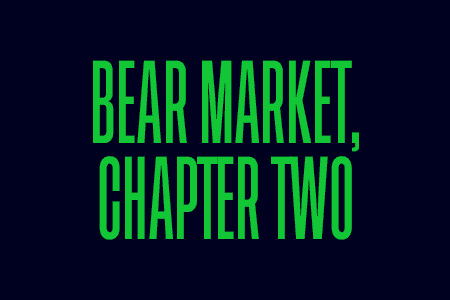We’ve turned the page to chapter two in this bear market.
And this could be the part when things start to break.
In fact, it may already be happening. The Fed basically told us they expect the job market to lead us into a recession. The British pound is in freefall. The 10-year yield is spiking up to nearly 4%. Inflation is still raging. These headlines are not only unsettling in the moment, but could define how economies and companies fare in the coming months.
Look — this environment is far from comfortable, and you’re probably feeling worn down after several months of this. I know I am. How do you process all of the noise?
Short answer: You determine what’s important for your portfolio and your sanity. If you’re investing for the short term, you need to weigh the pros and cons of this environment. When rates rise, the value of a dollar in the future falls (versus the value of a dollar today). The hurdle is higher for that return.
But if you’re thinking more down the road and can take on some risk, you might be in a more opportunistic position than you think.
Yes, society is in the thick of an economic and humanitarian crisis. But in the darkest hours, it’s important to remember that this, too, will pass. Cycles of joy and pain have been the heartbeat of the stock market for decades. Humans innovate, businesses adapt, profits rise, shares increase. Then, a crisis hits. We react, we mourn, and then we rebuild.
The present may feel painful, but remember that people tend to underestimate their own (and the world’s) future growth and adaptability. It’s important to think about what the world could look like after this. Things may be breaking, but these cracks could ultimately lead to new trends and innovation. And in a high-rate world, money becomes more selective. Some businesses will inevitably die off, but the strongest may survive. Other concepts may prove to be useful when costs are high, labor is scarce, and global trade is broken.
It’s one thing to be optimistic and another to confidently step in and invest in times of crisis. But our drumbeat since day one of this selloff has been about the opportunity in bear markets. A new bear market bottom doesn’t change that. You just need to be clear about your ability to wait.
Why? Because markets go up and down, but over time, they’ve mostly gone up.
*Data sourced through Bloomberg. Can be made available upon request.



